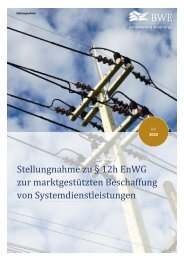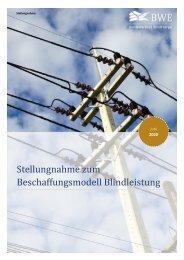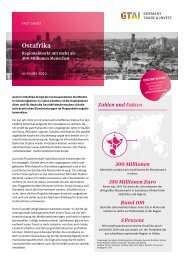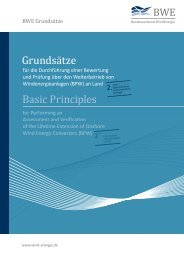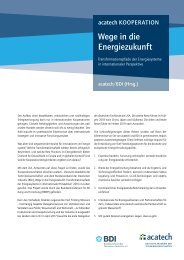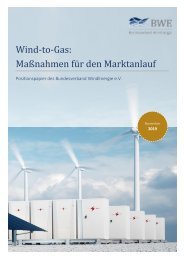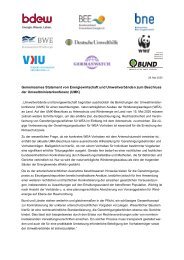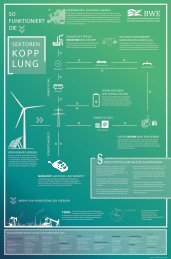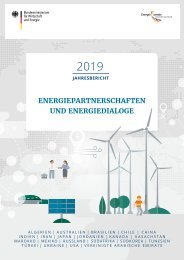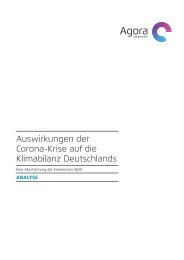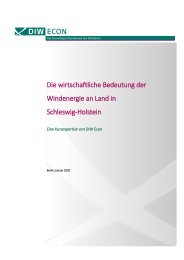Making transition work - Wind Europe
This report provides clear elements on how to make transition work in the coming decade. It provides recommendations to policymakers on how to facilitate a swift transformation of the energy system and considers the policies that will make Europe the best choice for those investing in renewables.
This report provides clear elements on how to make transition work in the coming decade. It provides recommendations to policymakers on how to facilitate a swift transformation of the energy system and considers the policies that will make Europe the best choice for those investing in renewables.
You also want an ePaper? Increase the reach of your titles
YUMPU automatically turns print PDFs into web optimized ePapers that Google loves.
<strong>Making</strong> <strong>transition</strong> <strong>work</strong>: policy<br />
3.2 DESIGNING THE NEW<br />
ENERGY MARKET<br />
As the penetration of renewables increases, instruments<br />
to support their deployment need to become more<br />
market based, increasing competition and reflecting shortterm<br />
market signals, while ensuring long-term stability<br />
of future revenues. In parallel, the energy market has<br />
to better suit for the instrinsic characteristics of variable<br />
energy sources, allowing a level playing field among all<br />
participants.<br />
FIGURE 9<br />
Renewables and the market<br />
Market fit for RES<br />
RES POLICY fit for market<br />
1. Faster<br />
markets<br />
(shorter lead<br />
times)<br />
2. Larger<br />
markets<br />
(cross-border<br />
participating)<br />
1. Market<br />
based<br />
(feed-inpremium)<br />
2. Tender<br />
based<br />
3. Smaller<br />
products<br />
4. Efficient<br />
pricing<br />
3. Based<br />
on energy<br />
production<br />
4. Technology<br />
specific<br />
5. Level playing field for all market players<br />
Source: <strong>Wind</strong><strong>Europe</strong>, Market4RES EU funded project, 2016<br />
3.2.1 MARKET FIT FOR RENEWABLES<br />
2. Larger markets<br />
1. Faster markets<br />
In a future power system dominated by wind and other<br />
variable renewables, the timing of markets should allow<br />
for changes in system conditions such as updated power<br />
demand, weather patterns variations and changes in<br />
generation. Concretely, this means that TSOs should<br />
operate the system as close as possible to real time<br />
(gate closure time) while ensuring system security and<br />
stability assessments. This would give variable generators<br />
the option to correct their deviations as their forecast<br />
improves considerably closer to the time of energy<br />
delivery.<br />
<strong>Wind</strong> power output smooths out when it is aggregated<br />
over several sites and across large geographical areas,<br />
many of which may or may not be located within the same<br />
grid, market, or control area. In order to enlarge markets<br />
and connect these areas, system operators would need to<br />
use more sophisticated methods to allocate transmission<br />
capacity.<br />
3. Smaller products<br />
Trading wind energy is easier through small timeframe<br />
products. This is because the predictability of energy<br />
delivery improves at shorter timeframes. Also, because<br />
smaller products allow for the possibility to adjust bids<br />
closer-to-real-time demand.<br />
24 <strong>Making</strong> <strong>transition</strong> <strong>work</strong><br />
<strong>Wind</strong><strong>Europe</strong>



